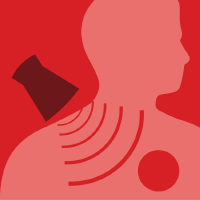Topic Menu
► Topic MenuTopic Editors



Advanced Technologies for Drug Delivery, Pathogen Detection and Diagnostics
Topic Information
Dear Colleagues,
We are delighted to announce a call for submissions to a Topic of “Advanced Technologies for Drug Delivery, Pathogen Detection and Diagnostics”. The global pandemic has drawn increasing research attention on the development of advanced tools and technologies for molecular detection of pathogenic microorganisms, rapid diagnosis, and efficient drug delivery systems on infectious diseases. Close collaboration from researchers with expertise on chemical engineering, material technology, nanotechnology, pharmacology, molecular biology, immunology, and bioinformatics is highly desired. Taking this opportunity of organizing a topic collection, we would like to highlight innovative researches in related areas, in the scope from novel drug delivery systems for pathogenic microorganisms, nanovaccine development, host-pathogen interactions, evasion of RNA virus from innate immunity, to rapid, affordable and sensitive methods for pathogen detection and quantification. Your article can be written to focus on a specific research topic (Article format) by you and your group, or alternatively it can be written in the style of a Review of relevance to the community. We hope that this special collection would serve as an international platform for further interdisciplinary research discussion and cooperation, promoting the development of interdisciplinary research fields.
Dr. Xi Yao
Dr. Yung-Fu Chang
Dr. Ming-Liang He
Topic Editors
Keywords
- nanomedicine
- targeted delivery
- nanoparticles
- micro/nanoneedle
- antiviral
- immunity
- outer-membrane vehicle
- exosome
Participating Journals
| Journal Name | Impact Factor | CiteScore | Launched Year | First Decision (median) | APC |
|---|---|---|---|---|---|

Biomedicines
|
3.9 | 6.8 | 2013 | 17 Days | CHF 2600 |

Diagnostics
|
3.3 | 5.9 | 2011 | 21 Days | CHF 2600 |

Journal of Nanotheranostics
|
- | - | 2020 | 18.9 Days | CHF 1000 |

Micro
|
1.9 | 3.2 | 2021 | 28.1 Days | CHF 1200 |

Pharmaceutics
|
5.5 | 10.0 | 2009 | 14.9 Days | CHF 2900 |

Preprints.org is a multidisciplinary platform offering a preprint service designed to facilitate the early sharing of your research. It supports and empowers your research journey from the very beginning.
MDPI Topics is collaborating with Preprints.org and has established a direct connection between MDPI journals and the platform. Authors are encouraged to take advantage of this opportunity by posting their preprints at Preprints.org prior to publication:
- Share your research immediately: disseminate your ideas prior to publication and establish priority for your work.
- Safeguard your intellectual contribution: Protect your ideas with a time-stamped preprint that serves as proof of your research timeline.
- Boost visibility and impact: Increase the reach and influence of your research by making it accessible to a global audience.
- Gain early feedback: Receive valuable input and insights from peers before submitting to a journal.
- Ensure broad indexing: Web of Science (Preprint Citation Index), Google Scholar, Crossref, SHARE, PrePubMed, Scilit and Europe PMC.

